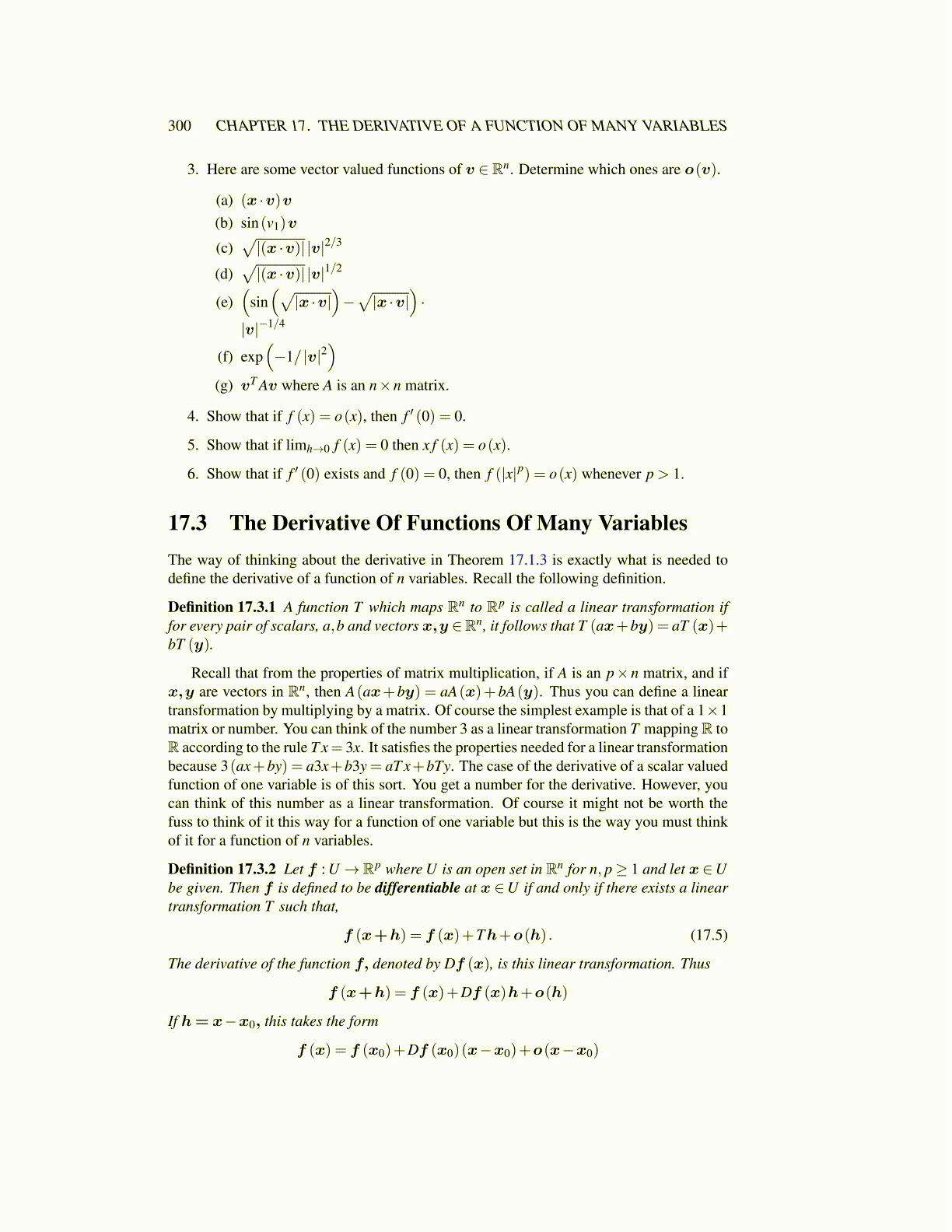
300 CHAPTER 17. THE DERIVATIVE OF A FUNCTION OF MANY VARIABLES
3. Here are some vector valued functions of v ∈ Rn. Determine which ones are o(v).
(a) (x ·v)v(b) sin(v1)v
(c)√|(x ·v)| |v|2/3
(d)√|(x ·v)| |v|1/2
(e)(
sin(√|x ·v|
)−√|x ·v|
)·
|v|−1/4
(f) exp(−1/ |v|2
)(g) vT Av where A is an n×n matrix.
4. Show that if f (x) = o(x), then f ′ (0) = 0.
5. Show that if limh→0 f (x) = 0 then x f (x) = o(x).
6. Show that if f ′ (0) exists and f (0) = 0, then f (|x|p) = o(x) whenever p > 1.
17.3 The Derivative Of Functions Of Many VariablesThe way of thinking about the derivative in Theorem 17.1.3 is exactly what is needed todefine the derivative of a function of n variables. Recall the following definition.
Definition 17.3.1 A function T which maps Rn to Rp is called a linear transformation iffor every pair of scalars, a,b and vectors x,y ∈Rn, it follows that T (ax+by) = aT (x)+bT (y).
Recall that from the properties of matrix multiplication, if A is an p×n matrix, and ifx,y are vectors in Rn, then A(ax+by) = aA(x)+ bA(y). Thus you can define a lineartransformation by multiplying by a matrix. Of course the simplest example is that of a 1×1matrix or number. You can think of the number 3 as a linear transformation T mapping R toR according to the rule T x= 3x. It satisfies the properties needed for a linear transformationbecause 3(ax+by) = a3x+b3y = aT x+bTy. The case of the derivative of a scalar valuedfunction of one variable is of this sort. You get a number for the derivative. However, youcan think of this number as a linear transformation. Of course it might not be worth thefuss to think of it this way for a function of one variable but this is the way you must thinkof it for a function of n variables.
Definition 17.3.2 Let f : U → Rp where U is an open set in Rn for n, p≥ 1 and let x ∈Ube given. Then f is defined to be differentiable at x ∈U if and only if there exists a lineartransformation T such that,
f (x+h) = f (x)+Th+o(h) . (17.5)
The derivative of the function f, denoted by Df (x), is this linear transformation. Thus
f (x+h) = f (x)+Df (x)h+o(h)
If h= x−x0, this takes the form
f (x) = f (x0)+Df (x0)(x−x0)+o(x−x0)